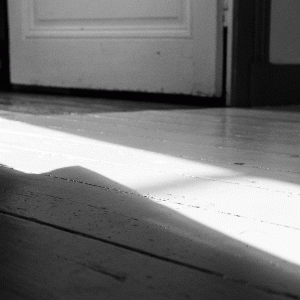
Removing old flooring is often the unsung hero of home renovation. While it may seem like a purely destructive task, proper preparation and execution can save you significant money and prevent potential headaches down the line.
This ultra-detailed guide will equip you with the knowledge and techniques to safely and efficiently remove various types of old flooring, preparing your space for a fresh, new look.
I. Planning and Preparation: The Key to a Smooth Demolition
- 1. Identify the Flooring Type:
- The Importance: Different flooring materials require different removal techniques.
- The Process: Determine if you’re dealing with tile, hardwood, laminate, carpet, vinyl, or other materials.
- 2. Assess the Subfloor:
- The Importance: Understanding the subfloor’s condition is crucial for preventing damage and ensuring a smooth transition to new flooring.
- The Process: Inspect the subfloor for damage, rot, or unevenness. Note the subfloor material (plywood, concrete, etc.).
- 3. Safety First: Gear Up:
- The Importance: Demolition can generate dust, debris, and potential hazards.
- The Process: Gather essential safety gear:
- Safety glasses (protect your eyes from flying debris).
- Gloves (protect your hands from sharp edges and rough materials).
- Respirator or dust mask (protect your lungs from dust and airborne particles).
- Knee pads (protect your knees during prolonged kneeling).
- Sturdy footwear (protect your feet from falling objects).
- 4. Protect Your Surroundings:
- The Importance: Demolition can create a mess.
- The Process:
- Cover furniture and fixtures with plastic sheeting.
- Seal off doorways with plastic sheeting to contain dust.
- Remove any valuable items from the work area.
- Lay down drop cloths to protect adjacent floors.
- 5. Gather Your Tools:
- The Importance: Having the right tools saves time and effort.
- The Process: Assemble the necessary tools:
- Pry bar or flat bar (for prying up flooring).
- Hammer or mallet (for striking tools).
- Scraper (for removing adhesive residue).
- Chisel (for breaking tiles or stubborn materials).
- Utility knife (for cutting carpet or vinyl).
- Shovel (for scooping up debris).
- Heavy-duty garbage bags or containers (for debris disposal).
- Circular saw (for cutting large flooring sections).
- Floor scraper (for large areas of adhesive).
- Sledgehammer (for breaking tile).
II. Removal Techniques: A Material-Specific Approach
- 1. Carpet Removal:
- The Process:
- Use a utility knife to cut the carpet into manageable strips.
- Pull the carpet up from a corner, using pliers if necessary.
- Remove the carpet padding, which may be stapled or glued to the subfloor.
- Use a scraper to remove any remaining adhesive.
- The Process:
- 2. Vinyl or Linoleum Removal:
- The Process:
- Use a utility knife to cut the vinyl into strips.
- Peel up the vinyl, using a scraper or pry bar as needed.
- For glued-down vinyl, use a floor scraper or heat gun to loosen the adhesive.
- Remove any remaining adhesive with mineral spirits or a specialized adhesive remover.
- The Process:
- 3. Tile Removal (Ceramic, Porcelain, or Stone):
- The Process:
- Wear safety glasses and a respirator.
- Use a hammer and chisel to break the tiles into smaller pieces.
- Pry up the tiles with a pry bar or flat bar.
- Use a floor scraper to remove the thin-set mortar.
- For stubborn thin-set, use a power scraper or grinder.
- The Process:
- 4. Hardwood or Laminate Removal (Nailed or Glued):
- The Process (Nailed):
- Use a pry bar or flat bar to pry up the planks, starting from a corner.
- Use a hammer to strike the pry bar, loosening the planks.
- Remove any nails or staples from the subfloor.
- The Process (Glued):
- Use a pry bar or chisel to break the adhesive bond.
- A circular saw can be used to cut the flooring into smaller sections. Set the blade to the depth of the flooring.
- A floor scraper, or heat gun, can be used to remove the adhesive.
- The Process (Nailed):
- 5. Engineered Hardwood (Glued or Floating):
- The Process (Glued):
- Same as glued hardwood.
- The Process (Floating):
- This is usually very simple. remove the baseboards, and then remove the flooring planks.
- The Process (Glued):
III. Subfloor Preparation: Laying the Groundwork for Success
- 1. Inspect the Subfloor:
- The Process: Check for damage, rot, or unevenness.
- 2. Clean the Subfloor:
- The Process: Remove any remaining debris, adhesive, or nails.
- 3. Repair Damage (If Necessary):
- The Process: Repair any damaged areas with appropriate patching compounds or replacement materials.
- 4. Level the Subfloor (If Necessary):
- The Process: Use self-leveling compound to level uneven concrete subfloors.
- The Process: Use plywood or other underlayment to level uneven wood subfloors.
IV. Debris Disposal: A Clean and Responsible Approach
- 1. Contain the Debris:
- The Process: Use heavy-duty garbage bags or containers to collect debris.
- 2. Dispose of Debris Properly:
- The Process: Check local regulations for proper disposal of construction debris.
- The Process: Consider renting a dumpster for large demolition projects.
V. Expert Tips and Considerations
- Work in Sections: Break the removal process into manageable sections.
- Be Patient: Removing old flooring can be time-consuming.
- Listen for Hazards: Be aware of potential hazards, such as electrical wires or plumbing pipes.
- Consult Professionals: If you encounter asbestos or other hazardous materials, consult with a qualified professional.
- Protect your back: Use proper lifting techniques.
By following these detailed instructions and employing the right techniques, you can confidently remove old flooring yourself, preparing your space for a beautiful and updated transformation.
